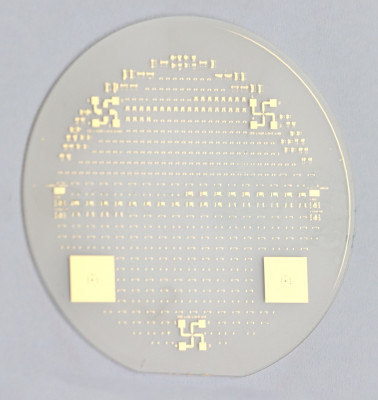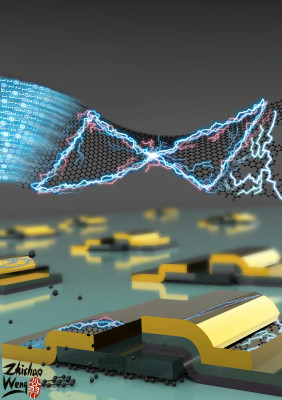News
Queen Mary and Paragraf researchers produce graphene-based memristors at wafer scale
23 October 2024


Researchers from Queen Mary University of London (QMUL) and Paragraf Limited have advanced the development of memristors incorporating the “wonder material”, graphene.
The importance of memristors
Memristors are recognised as having significant potential in the future of non-volatile memory and artificial neural networks (ANNs), because they offer the ability to perform analogue computation, retain data without power, and mimic synaptic functions that could be useful in next-generation computing systems.
The wonder material
Graphene is just one atom thick but has the highest electron mobility of all materials, making it extraordinary electrode material for many semiconductor devices.
The integration of graphene electrodes in memristors brings many outstanding benefits that could revolutionise the field. The endurance of memristors is currently a major challenge, and graphene electrodes could block at least two chemical pathways to device degradation, enhancing the overall device performance and lifetime. Furthermore, graphene electrodes offer remarkable transparency, transmitting ~98% of light, meaning that graphene-electrode based memristors could be used as light-sensitive synapses and optically tuneable memories, paving the way for state-of-the-art applications in computing and AI.
The problem and the solution
Until recently the scalability of graphene-based electronic devices has been limited by a lack of methods to produce high quality monolayer graphene in a way compatible with standard semiconductor processes. Paragraf has overcome this challenge and can grow exceptionally high-quality graphene directly on substrates with a breakthrough Metalorganic Chemical Vapor Deposition (MOCVD) process which is used to produce commercially available Hall effect sensors and graphene field-effect transistors (GFETs).
Using a multi-step photolithography process, the team successfully patterned and integrated this graphene into the resulting memristors in a reproducible manner. This was a project to explore the potential for graphene memristors, to establish proof of concept, to assess the suitability of graphene compared to other materials for memristors, and to investigate the advantages of graphene in this application. Producing graphene-based memristors in this way is the latest demonstration of the expanding role that graphene can play in the semiconductor industry.
The research formed part of a Knowledge Transfer Partnership (Innovate UK) between QMUL and Paragraf, and was published and features on the cover page of ACS Advanced Electronic Materials.
| Contact: | Oliver Fenwick |
| Email: | o.fenwick@qmul.ac.uk |
| Website: | |
| People: | Oliver FENWICK Colin HUMPHREYS |




